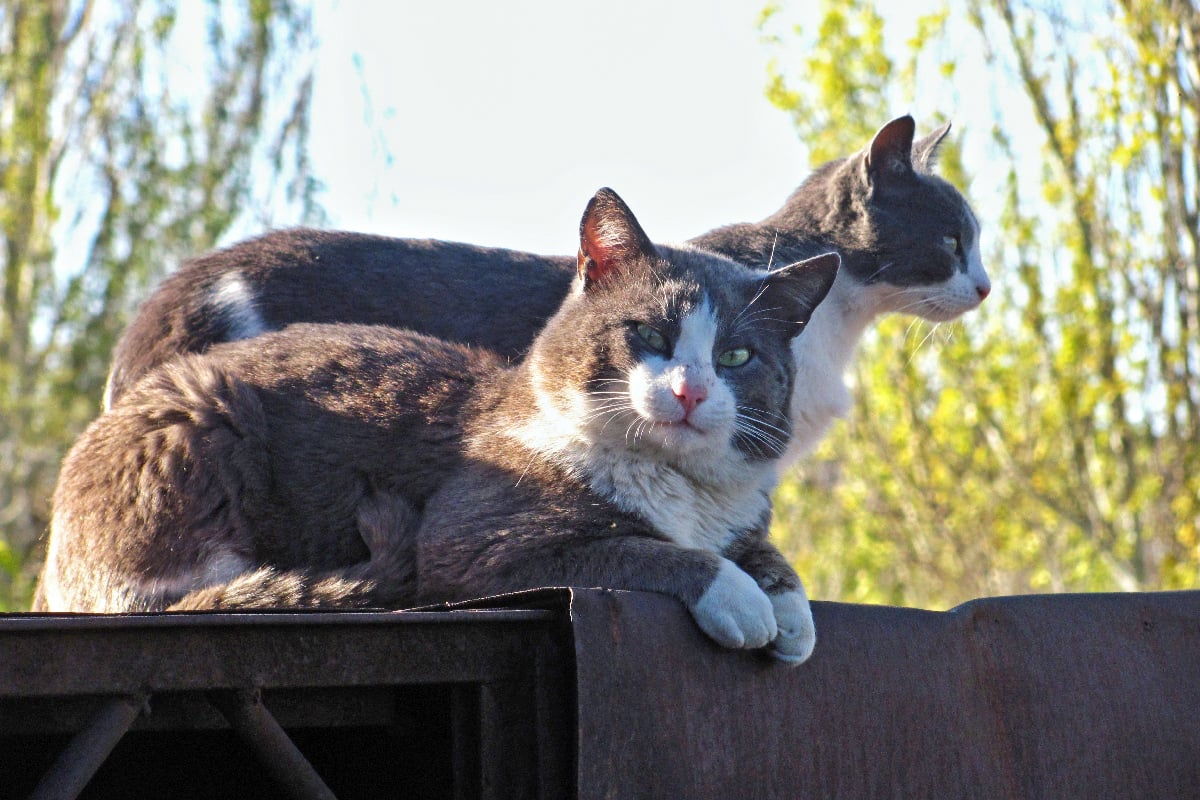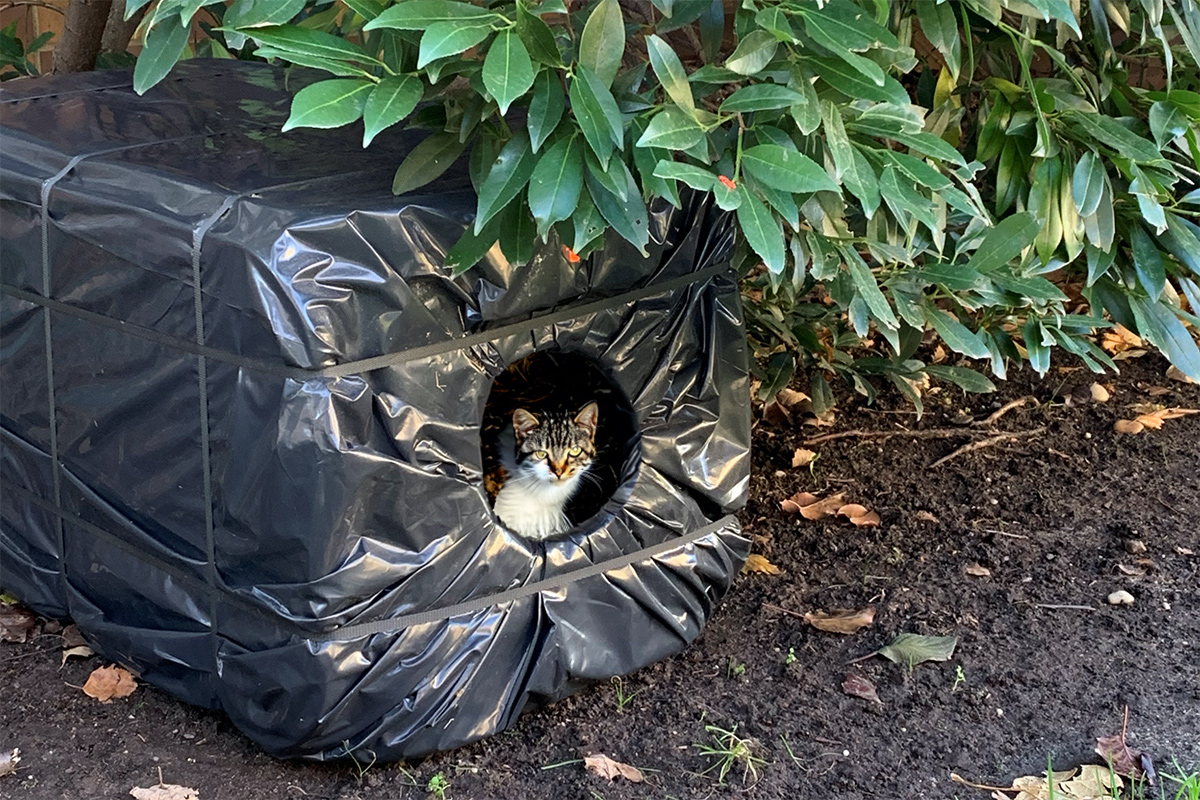Just as important in cold weather, feral cats – also known as community cats –need proper shelter during the summer months. These cats can be particularly vulnerable to extreme temperatures and at risk of dehydration and heat exhaustion. That’s why a safe place to rest in a cool, shady spot can make all the difference.

If you have community cats in your area, or you are helping to manage a feral colony, you know the adversity they face in all seasons. Here are just a few ways that shelters can help protect them when the sun bears down:
- Shade: Especially in urban areas, shelters provide a shaded area where cats can escape the direct heat of the sun. This reduces their risk of heat stroke and provides a safe space during peak temperatures.
- Cooling Down: Insulated shelters can stay cooler, even in hotter weather. Materials like reflective foil or Styrofoam can be used to maintain a lower internal temperature, offering cats a cooler place to rest.
- Hydration Stations: Incorporating water stations within or near shelters ensures that cats have regular access to fresh water, crucial for preventing dehydration. You may also want to include ice cubes, so the water stays cooler longer.
- Safety From Predators: Besides heat protection, shelters can also offer a safe space from other environmental hazards and predators, providing an all-around safe environment for feral cats.
More elaborate shelters can be purchased at pet stores or on Amazon.com, but a DIY shelter would be a more affordable option, and still be a welcome summer house for your feline friends.

Building a Feral House (Styrofoam cooler method)
Many people order food online these days, so this is a great way to repurpose those coolers. They can also be found in supermarkets or hardware stores.
- Inspect the cooler. Any cracks should be glued together with an adhesive that sticks to Styrofoam or use duct tape.
- To make entranceways, take a bowl and outline it where you want to put your openings.
- Cut the holes out with a thin serrated edge. When pushing the pieces out, be gentle or you can break the wall of the shelter. At this time, decide whether you want two entranceways or one. If it is a smaller cooler, one entranceway will keep it warmer, but it depends on where the house is to be located and if there is the danger of unfriendly animals climbing in.
- If you have extra Styrofoam, cut it to fit into the bottom of the cooler so you can give it a thicker floor and help it last longer.
- The lids should be taped all the way around, as well as around the entire cooler.
- Tape black garbage bags around the entire cooler to make it waterproof.
- Add straw.
- Weigh the cooler down with a piece of wood so it doesn’t blow away or fall over.
- If you have several coolers, you can tape two together and cut matching holes in the sides to make one big house, then cover the whole house with black garbage bags.
Building and maintaining these cat shelters can be a small but impactful intervention that can help save lives. For more information on how you can help community cats in your area. Visit animalleague.org/communityoutreach.


